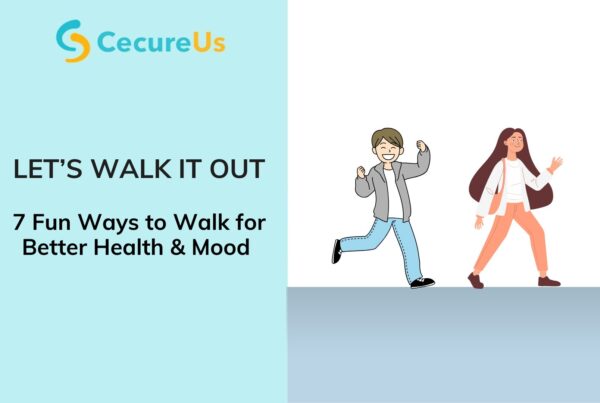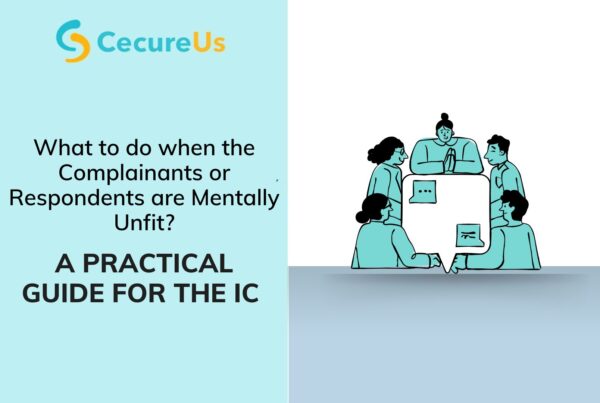
Host: Viji Hari
The SAFE SPACE podcast, where we explore the importance of creating safer, happier, and inclusive workplaces. In each episode, we’ll hear from industry leaders, share best practices, and tell stories of personal growth hosted by Viji Hari, the CEO of CecureUs, Author, and Speaker, specializing in the areas of Prevention of Sexual harassment (PoSH), Diversity & Inclusion (DnI) and Mental Wellness across Corporates. We are grateful for the overwhelming response for the last episode.
As July marks Disability Pride Month, we’re here to discuss disability inclusion in the workplace. Shanmathi Senthil Kumar, a Mental Health Professional committed to fostering inclusivity in both societal and organizational contexts. With six years of experience, Shanmathi has dedicated herself to breaking barriers and promoting accessibility.
As a disabled woman, Shanmathi strives to normalize and visibilize the lives of people with disabilities. She is focused on challenging stereotypes and removing obstacles that hinder access. Her commitment to advancing inclusivity and equality makes this conversation essential for those working to create more inclusive workplaces.
Shanmathi’s Journey: Breaking Barriers
Shanmathi shared her journey of embracing her identity as a physically disabled woman with a locomotor disability, using a wheelchair for mobility. It wasn’t until 2020 or 2021 that she became comfortable with the terms “disability” and “disabled” due to the negative connotations and societal conditioning, taking nearly 26 years to come to terms with them.
Growing up in Chennai in a family of three, Shanmathi faced significant challenges due to the lack of accessibility in the early 2000s. Her school experience was particularly difficult, with classrooms often located on upper levels. Despite some accommodations, she had to rely on her parents to carry her to class, leading to a recurring sense of isolation and alienation. Watching her peers enjoy aspects of school that were inaccessible to her made her feel as though she didn’t fit into the spaces she was in.
It wasn’t until she attended university and met other individuals with disability with similar experiences that she realized the the problem lay not with her but with environments that weren’t designed to accommodate her needs. This understanding inspired her to become a counselling psychologist and disability specialist, offering mental health support to others with disabilities, often in partnership with NGOs.
Passions and Advocacy
“Loud and Proud”
Shanmathi is fiercely passionate about being vocal about her identity as a disabled woman and bringing others along on her journey. While she acknowledges the shared struggles among people with disabilities, she insists on celebrating the unique aspects of each person’s experience. Her current mission is to amplify the voices of those with disabilities, showcasing their vibrant lives filled with fun, adventure, and success. She believes in being “loud and proud,” proving that disabled individuals can thrive both personally and professionally.
Bridging Personal Challenges and Professional Barriers: Navigating Disability Inclusion
“True accessibility goes beyond ramps and elevators; it starts with changing minds and hearts.”
Shanmathi discussed the personal challenges she faces as a disabled woman and the broader challenges organizations encounter when fostering disability inclusion. On a personal level, she emphasized that while physical inaccessibility is a significant hurdle, the more deeply rooted issue lies in societal mindsets. The negative connotations tied to disability often result in a lack of awareness and a reluctance to create accessible spaces.
Shanmathi recounted how people would show pity towards her parents because of her disability, reinforcing the harmful notion that disability is something to be pitied. This mindset perpetuates barriers, as it leads to the overlooking of necessary accommodations.
From an organizational perspective, Shanmathi noted that while there has been progress in making spaces accessible, these efforts are sometimes not executed thoughtfully. For instance, adding steps before elevators or hiring disabled employees without proper accommodations can lead to retention issues and negatively impact the mental health of those individuals.
Viji added that organizations often focus narrowly on locomotor disabilities and feel unprepared to address them, while other common disabilities, which don’t require major infrastructural changes, are overlooked. This limited perspective underscores how a closed mindset can hinder practical acts of inclusion.
Practical Steps for Inclusion
For DEI champions and HR professionals, Shanmathi offers practical steps to create a more inclusive environment for employees with disabilities. One of the first steps is conducting an accessibility audit to identify gaps, needs, and the scope for improvement in disability inclusion. Clearer policies are also crucial—while general anti-discrimination policies exist, there’s a need for specific policies that address the unique challenges faced by people with disabilities, such as microaggressions, and the expectation for them to be inspirational.
Inclusive hiring practices are another area of focus. Job descriptions should use non-ableist language that makes all candidates feel included and welcomed. Continuous conversations and employee resource groups should be established to ensure ongoing inclusive dialogue and visibility of disabled stories.
Shanmathi’s advice to individuals with disabilities is to leverage online networks for support, advocate for themselves in asking for accommodations, and seek apprenticeships and sponsorships from organizations. For organizations, fostering a culture of open conversations and holding space for the experiences of people with disabilities is key to creating a truly inclusive environment.
Final Thoughts
“Diversity is a fact, but inclusion is an act.”
In conclusion, disability inclusion is not just about physical infrastructure but about challenging and changing mindsets. As Shanmathi emphasized, By taking intentional steps towards inclusion, we can create workplaces where everyone, regardless of their abilities, can thrive and feel a sense of belonging.
This episode of the SAFE SPACE podcast sparks a transformative realization about disability inclusion, setting the stage for future discussions on creating inclusive workplaces. Stay tuned for inspiring stories and practical tips for both organizations and employees!
Please reach out to us for any queries on Disability Inclusion At Workplace.
For more blogs and articles, visit our official website. Contact us for workshops and queries related to POSH, EAP (Employee Assistance Program) , Diversity and Inclusion and Code Of Conduct.




